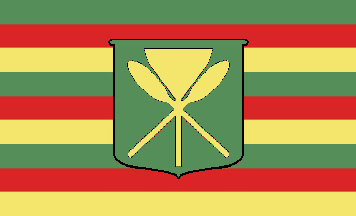Government: Feudal-styled military dictatorship.
Currency: Koku. It is based on rice crops.
Economic Policy: 7, the daimyo has absolute command over foreign trade, but doesn't really care about the domestic market.
Social Policy: 7, the daimyo will not tolerate a strong opposition that could potentially bring him down, but otherwise people are mostly free to do whatever they want.
History: After the ancient rule of the Coruscantis and during the chaos that ensued for the next centuries, Japan took refuge in his traditional values and the Second Sengoku Period started, with the old clans resurging around old cities and celebrities. The Emperor somehow managed to keep control of the area around Tokyo and form a small army of his own, but it soon saw massive emigration as the megalopolis had an unsustainable population and disease and famine took its streets. All in all, though, most clans were in the same situation.
Except for the Shimazu who, thanks to the western position of Honshu in the Japanese archipelago, were able to develop a trader economy from their port of Kagoshima, thanks to which they could revitalise their economy and take the North Coast of Honshu, which had previously fallen to the Mori from Hiroshima, in Kyushu.
To solidify their position in trade, the Shimazu invaded the old Japanese island of Okinawa, among others, that had broken free at the beginning of the Second Sengoku Period. Thanks to this campaign, the Shimazu enhanced their naval warfare skills and paired it to that of the Mori, which constantly raided Shimazu trade routes and had better trained crews. They controlled the Seto Inland Sea after all, and were projecting their power up to the point of conquering Shikoku to gain a better port at Tosa from where to engage in trade through Okinawa, which was subsequently cut.
The now-impoverished Mori tried to fight back and regain their losses on Honshu, but the better training of the Shimazu on the ground. The defeat at the battle of Fukuoka left the Mori without a respectable field army, and their morale took a deep blow when in a quick campaign, the Shimazu navy attacked and took the small islands of Nagashima, Yashiro, Nakajima, Oshima and Yoshima, positions from which the Shimazu cut the Mori with their troops in Shikoku and their port of Tosa.
The subsequent defeat at sea of the Mori navy when trying to reconquer Yoshima by a combined fleet of the Shimazu and the Hatakeyama (who were the Eastern neighbours of the Mori and wanted to annex some territory) was the coup-de-grace that shattered the Mori clan. As they engaged in fratricidal civil wars and assassinations, the Shimazu crossed to Kyushu through the Kitakyushu-Kimonoseki bridge, and advanced without opposition against Hiroshima as the few remnants of the Mori army fought to hold the Hatakeyama at their border.
When news reached them of the advance against Hiroshima, chaos ensued and the Mori were no longer. Eventually, the Hatakeyama and Shimazu forces clashed in Hiroshima, after the formar had secured it and when the latter launched an assault aginst it, believing it was still controlled by the Mori. Ultimately the Hatakeyama were crushed when Shimazu reinforcements coming from Oshima struck the back of the Hatakeyama army, although both sides sustained heavy losses.
The forces on Shikoku capitulated to the Shimazu in exchange for a defensive pact against the Hatakeyama, which had taken the island of Awaji in preparation for an invasion. But of course they didn't know that the Hatakeyama army had been already crushed and that they posed no immediate threat.
Now, the Shimazu control the west of Japan, and are ready to annex the Hatakeyama and march against the other warlords of Japan to become the new Shogun.












